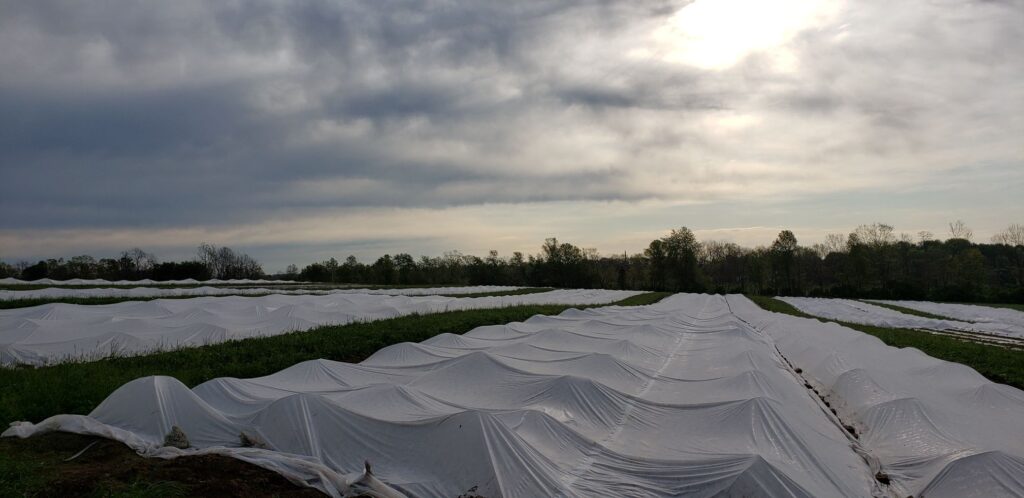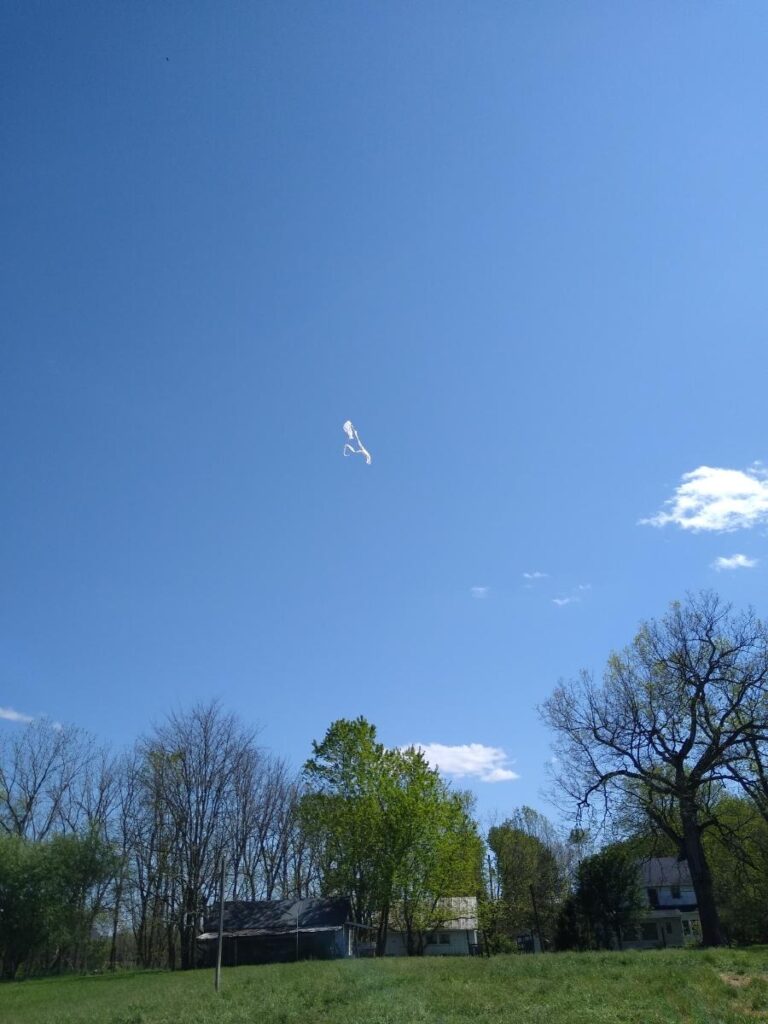The calendar says mid-May, but the farm feels like mid-March. We were sorely tested last weekend with a record-setting, below-freezing, nighttime temps. This was a terrible cold snap so late into spring. Derby Day has been the gold standard of the time to plant the summer garden for generations, but not this year.
Mother Nature tends to send us wake-up calls every now and then to keep us on our toes. We become better farmers for working through it. And did she ever test us with 28 degrees on Saturday morning. We do whatever it takes to care for the plants and animals we have brought into this world, and it looks like we came through mostly OK.
With that being said, it remains difficult to forecast opening the CSA Farm Share Summer Season. The overwintered greens have performed nicely to this point, but the spring-planted and -transplanted crops are delayed. The strawberries and asparagus are under-achieving, but they should kick in with warmer weather this weekend. We want to start delivering food to our CSA customers, but picking too hard too early is hard on the plants.
Saving the Crops
We do our best to do what it takes to grow good food, but this one takes the cake. We actually uprooted thousands upon thousands of recently transplanted tomatoes, peppers and okra—the summer garden stuff—out of the ground and put them back in the greenhouse for several days. This was not a decision taken lightly, mind you, nor was it easy to do.
We left some plants out in the field, under three layers of frost blankets with hope they might survive the cold and they will mature sooner, as planned, than their uprooted friends. The ones that we pulled and are now replanting will be delayed in their growth but alive. Some of the sensitive plants we left outdoors did survive, while others did not. Having just pulled the covers off yesterday, we are still assessing the patterns of freeze damage—knowledge to keep in our quiver for next time, because we are sure there will be a next time.
The well-established spring crops—like lettuce, hearty greens, beets and carrots— are well-equipped to handle light freezes, but 28 verges on a deep freeze. We covered several acres of crops with lightweight row-cover blankets to hedge our bets, since the farm is often a couple of degrees cooler than the various weather apps predict.

These wispy row-cover blankets don’t just magically lay over the crop. Putting on row cover, particularly with recent windy conditions, can look comical, unless you’re one of the people involved in it. We used thousands upon thousands of homemade sand bags, as well as bricks, along the edges to keep the wind from getting under these 30-foot by 1000-foot blankets. Last Sunday, a smaller piece pulled out from under its weighted bag and floated up hundreds of feet into the air, last we saw headed toward Bourbon County.

This Cold, Wet Spring
While winter was relatively mild, we haven’t really had spring yet. April was cloudy, cold and wet, and May is so far not any different.
Perennial plants—like strawberries, asparagus, and rhubarb—are quite confused. Strawberries have had frost blankets on more than off, asparagus gets frost/freeze burns more nights than not, turning the stalks to mush. Rhubarb plants broke dormancy and flowered early, now sitting out there wondering what they did wrong.
We have a weird combination of spring arrivals. The barn swallows came home April 26—normally mid-May because I always worry something happened in the thousands of miles they traveled since we were last together. Meanwhile, the peonies, iris and Baptisia—which Ann and I had in our late-April wedding many moons ago—still have not bloomed.
The soil is cooler than normal through all this, which slows root development and plant growth. The thing is, we can’t do anything about that.
Wake-up Call
Our agrarian mettle has been tested in various ways over the years; the drought of ’83 followed by the blizzard of ’83; the ice storms of ‘03 and ’07; 80 inches of rain in ’18. Spring of ’20 is testing not only our farming fancy footwork, but the world around us.
Mother Nature is sending us all a wake-up call. As a society, we have ignored the effects of fouling our own nests with toxic substances. We have turned up our collective nose at climate change. Malnutrition abounds in the land-o-plenty. It’s taken a pandemic to make society rethink the ‘I want what I want when I want it’ approach to life.
From planting to de-planting to re-planting, we are working through the Spring of ‘20 challenges to grow good food. Thank you for doing your part by choosing to source responsibly raised, local food. Together, we are doing whatever it takes to be the next greatest generation. —Mac Stone


Made with 
